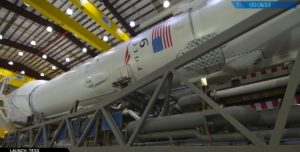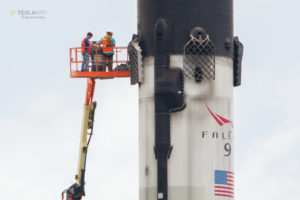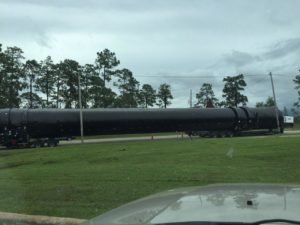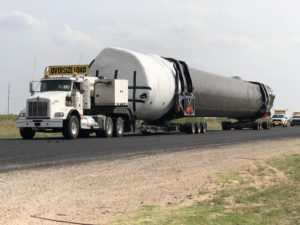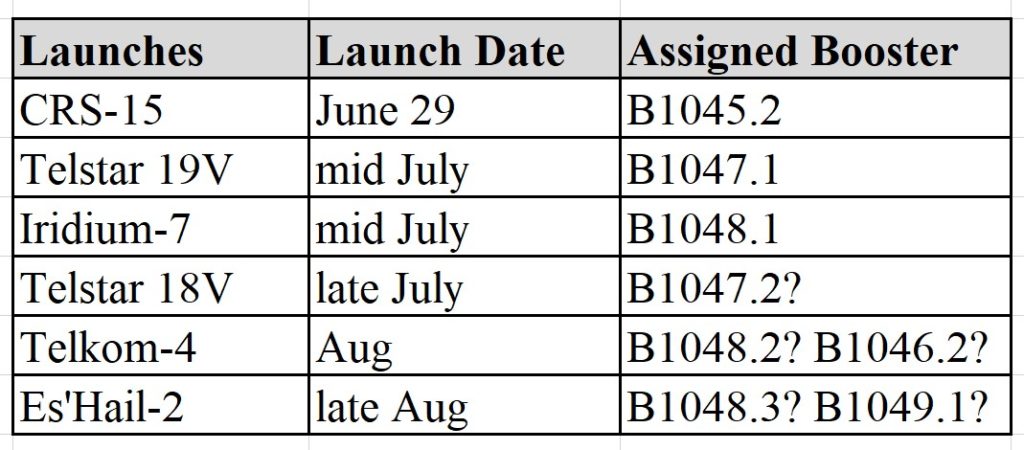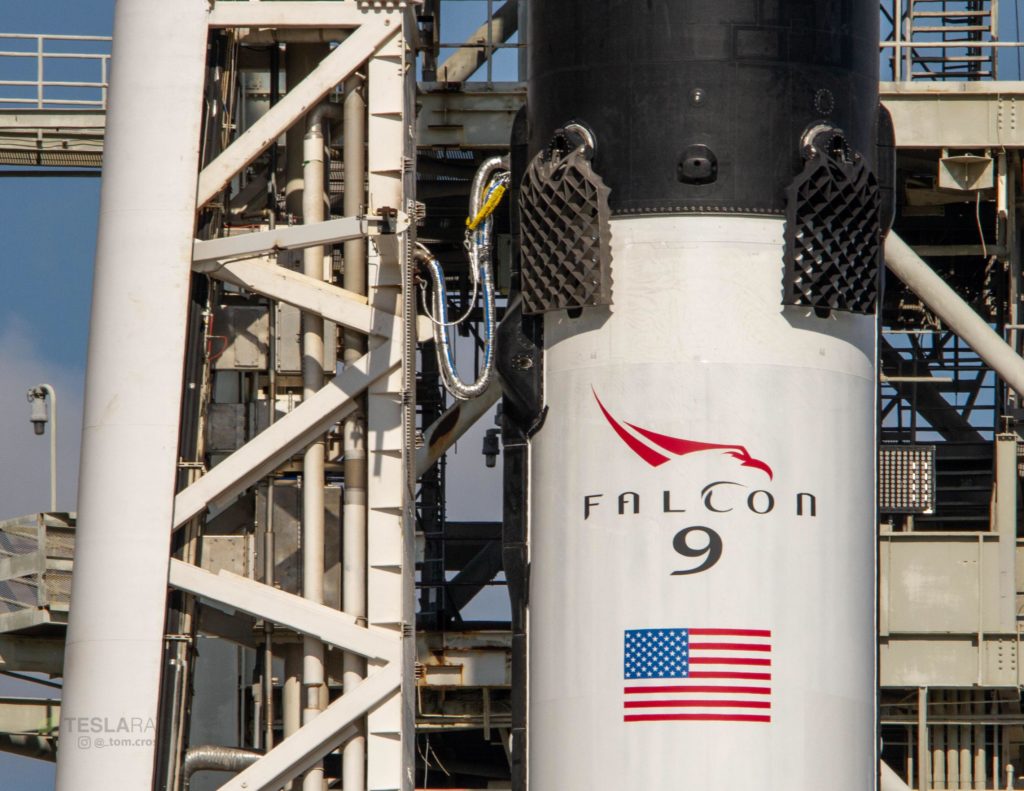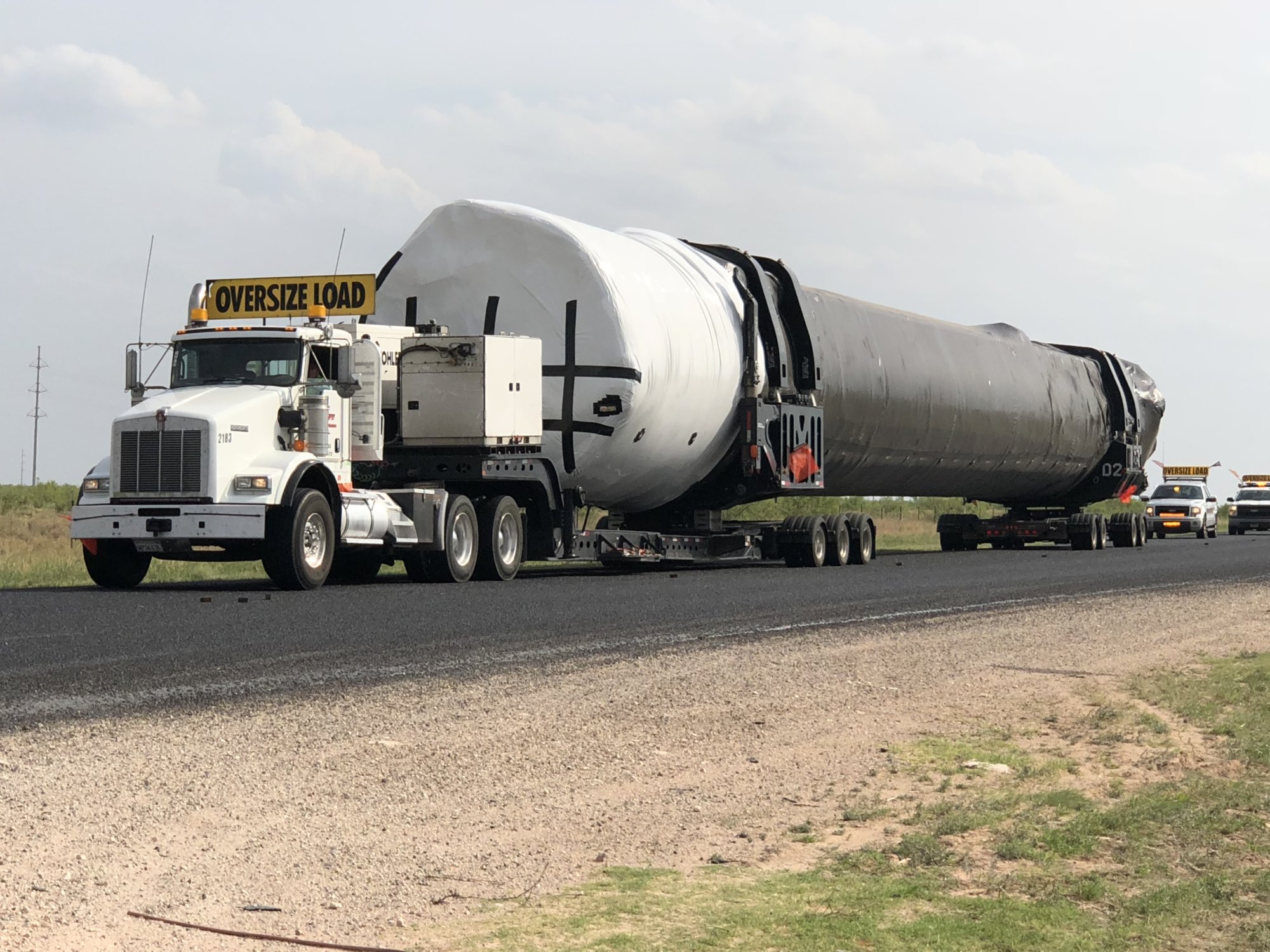
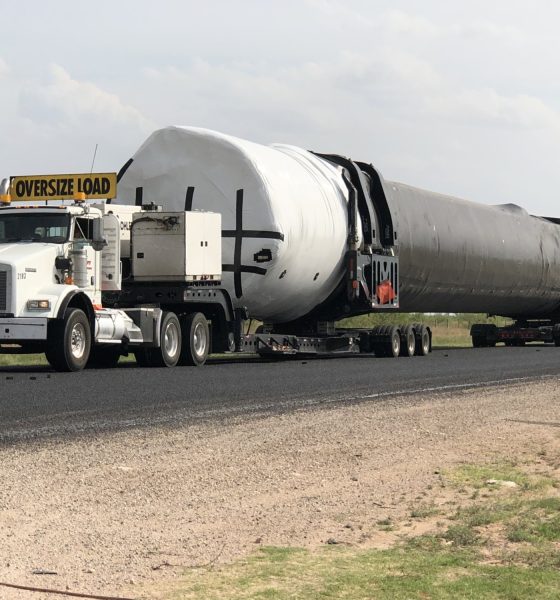
News
SpaceX’s third Block 5 rocket heads to Texas test site as launch marathon nears
A SpaceX Falcon 9 – almost certainly the third Block 5 booster to leave the company’s factory – was spotted passing through New Mexico on the last leg of its trip from California to Texas. Although the shipment is a great sign, it begs the question of how exactly SpaceX plans to launch its next six launches penciled in for July and August.
Bear with me, as this post will dive into the specifics of orchestrating launches – namely having rocket boosters, upper stages, and fairings all ready at the same place and time. Fundamentally, the analysis that follows suggests two main possibilities: 1) two or three of those July/August launches will have to be delayed for booster availability or 2) the first (and perhaps second) truly rapid reuse of Falcon 9 Block 5 boosters will occur before summer’s end.

The first Block 5 Falcon 9 lifts off on May 4, 2018. The upgrade’s rapid reusability optimizations could be crucial for SpaceX’s summer manifest. (Tom Cross)
After conducting routine static fire testing in McGregor, the booster spotted on Monday – B1048 – will likely be shipped West to Vandenberg Air Force Base for the first West coast Block 5 launch in mid-July. B1047, the second Block 5 booster to leave SpaceX’s Hawthorne factory, was spotted miles from Cape Canaveral, FL near the end of May, while B1046‘s early May launch marked the debut of Falcon 9 Block 5 and was expected to undergo several months of disassembly and analysis to ensure the rocket upgrade was functioning as intended. Based on previous patterns, the fourth Block 5 Falcon 9 booster – B1049 – should not be expected to ship from the factory to McGregor until late June or early July. Finally, the last orbital Block 4 booster (B1045) will conduct its second and final launch in the last few days of June, currently NET June 29.
Put simply, B1049 is unlikely to arrive at its first launch site until mid or late July and can thus be taken out of the July running. B1045 will be (presumably) expended after launch, also taking it out of the running for future launches. B1048 will almost certainly travel to Vandenberg Air Force Base (VAFB) for its first launch in July, effectively ruling out its availability for other July and August launches. Furthermore, Iridium’s CEO Matt Desch has stated that both Iridium-7 and Iridium-8 are expected to launch on unflown boosters. Fundamentally, this leaves two Block 5 boosters readily available for four loosely scheduled July and August launches on the East Coast.
- Falcon 9 B1045 prepares for its first launch in mid-April. (SpaceX)
- B1046 returned to Port Canaveral shortly after its May 4 debut, and is now being carefully analyzed as pathfinder hardware. (Tom Cross)
- Falcon 9 B1047 spotted in Florida just a short trip away from Cape Canaveral, where it will likely launch Telsat 19V in mid-July. (Reddit /u/fatherofzeuss)
- What was likely B1049 spotted heading to McGregor, Texas for static fire testing, June 11. (TeslaMotorsClub /u/nwdiver)
Focusing on July’s schedule as it currently stands, B1047 would be required to launch two high-energy geostationary transfer orbit (GTO) missions in as few as two weeks. The nature of drone ship recoveries would cut the time available between the booster’s return to port and its second static fire to perhaps 5-10 days. In other words, there would be almost no time whatsoever for refurbishment, at least compared to the current prospective record of B1045, roughly 70 days between launches.
All things considered, two launches of the same booster in well under a month would be an act of heroics given that B1047’s first launch will be the second or third-ever flight of Falcon 9 Block 5. An extensive upgrade to the venerable rocket intended to make it highly reusable and equally reliable, Block 5 is the culmination of more than half a decade of experience launching a wide array of Falcon 9 versions and 56 total launches. While I would place the odds of a sub-30 day back-to-back reflight happening less than two months from now at maybe 10%, my odds for the next six to nine months are closer to 95% – remember, Musk set SpaceX the goal of two flights of the same booster in 24 hours by the end of 2019. It may sound insane, but it quite literally was what Block 5 was designed to enable.
Although delays are more probable here, the alternative is a truly wild roller coaster of launches and historic reusable rocket milestones. Fingers crossed!
- A rough sketch of SpaceX’s launch schedule over the next few months. (Eric Ralph)
- After CRS-15, all orbital launches will be use Block 5 boosters and upper stages. The upgraded rocket’s next launch is NET July 20. (Tom Cross)
Follow us for live updates, peeks behind the scenes, and photos from Teslarati’s East and West coast photographers.
Teslarati – Instagram – Twitter
Tom Cross – Twitter
Pauline Acalin – Twitter
Eric Ralph – Twitter

News
Man credits Grok AI with saving his life after ER missed near-ruptured appendix
The AI flagged some of the man’s symptoms and urged him to return to the ER immediately and demand a CT scan.

A 49-year-old man has stated that xAI’s Grok ended up saving his life when the large language model identified a near-ruptured appendix that his first ER visit dismissed as acid reflux.
After being sent home from the ER, the man asked Grok to analyze his symptoms. The AI flagged some of the man’s symptoms and urged him to return immediately and demand a CT scan. The scan confirmed that something far worse than acid reflux was indeed going on.
Grok spotted what a doctor missed
In a post on Reddit, u/Tykjen noted that for 24 hours straight, he had a constant “razor-blade-level” abdominal pain that forced him into a fetal position. He had no fever or visible signs. He went to the ER, where a doctor pressed his soft belly, prescribed acid blockers, and sent him home.
The acid blockers didn’t work, and the man’s pain remained intense. He then decided to open a year-long chat he had with Grok and listed every detail that he was experiencing. The AI responded quickly. “Grok immediately flagged perforated ulcer or atypical appendicitis, told me the exact red-flag pattern I was describing, and basically said “go back right now and ask for a CT,” the man wrote in his post.
He copied Grok’s reasoning, returned to the ER, and insisted on the scan. The CT scan ultimately showed an inflamed appendix on the verge of rupture. Six hours later, the appendix was out. The man said the pain has completely vanished, and he woke up laughing under anesthesia. He was discharged the next day.
How a late-night conversation with Grok got me to demand the CT scan that saved my life from a ruptured appendix (December 2025)
byu/Tykjen ingrok
AI doctors could very well be welcomed
In the replies to his Reddit post, u/Tykjen further explained that he specifically avoided telling doctors that Grok, an AI, suggested he get a CT scan. “I did not tell them on the second visit that Grok recommended the CT scan. I had to lie. I told them my sister who’s a nurse told me to ask for the scan,” the man wrote.
One commenter noted that the use of AI in medicine will likely be welcomed, stating that “If AI could take doctors’ jobs one day, I will be happy. Doctors just don’t care anymore. It’s all a paycheck.” The Redditor replied with, “Sadly yes. That is what it felt like after the first visit. And the following night could have been my last.”
Elon Musk has been very optimistic about the potential of robots like Tesla Optimus in the medical field. Provided that they are able to achieve human-level articulation in their hands, and Tesla is able to bring down their cost through mass manufacturing, the era of AI-powered medical care could very well be closer than expected.
News
Tesla expands Model 3 lineup in Europe with most affordable variant yet
The Model 3 Standard still delivers more than 300 miles of range, potentially making it an attractive option for budget-conscious buyers.
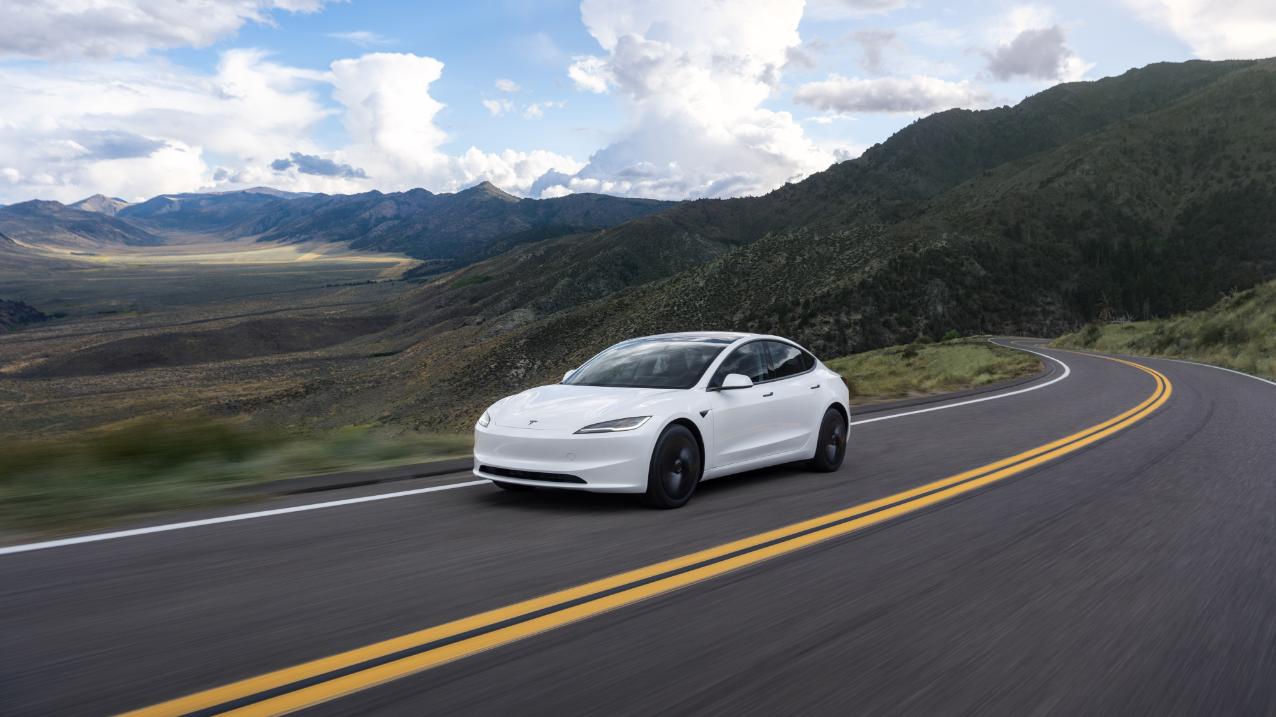
Tesla has introduced a lower-priced Model 3 variant in Europe, expanding the lineup just two months after the vehicle’s U.S. debut. The Model 3 Standard still delivers more than 300 miles (480 km) of range, potentially making it an attractive option for budget-conscious buyers.
Tesla’s pricing strategy
The Model 3 Standard arrives as Tesla contends with declining registrations in several countries across Europe, where sales have not fully offset shifting consumer preferences. Many buyers have turned to options such as Volkswagen’s ID.3 and BYD’s Atto 3, both of which have benefited from aggressive pricing.
By removing select premium finishes and features, Tesla positioned the new Model 3 Standard as an “ultra-low cost of ownership” option of its all-electric sedan. Pricing comes in at €37,970 in Germany, NOK 330,056 in Norway, and SEK 449,990 in Sweden, depending on market. This places the Model 3 Standard well below the “premium” Model 3 trim, which starts at €45,970 in Germany.
Deliveries for the Standard model are expected to begin in the first quarter of 2026, giving Tesla an entry-level foothold in a segment that’s increasingly defined by sub-€40,000 offerings.
Tesla’s affordable vehicle push
The low-cost Model 3 follows October’s launch of a similarly positioned Model Y variant, signaling a broader shift in Tesla’s product strategy. While CEO Elon Musk has moved the company toward AI-driven initiatives such as robotaxis and humanoid robots, lower-priced vehicles remain necessary to support the company’s revenue in the near term.
Reports have indicated that Tesla previously abandoned plans for an all-new $25,000 EV, with the company opting to create cheaper versions of existing platforms instead. Analysts have flagged possible cannibalization of higher-margin models, but the move aims to counter an influx of aggressively priced entrants from China and Europe, many of which sell below $30,000. With the new Model 3 Standard, Tesla is reinforcing its volume strategy in Europe’s increasingly competitive EV landscape.
News
Tesla FSD (Supervised) stuns Germany’s biggest car magazine
FSD Supervised recognized construction zones, braked early for pedestrians, and yielded politely on narrow streets.
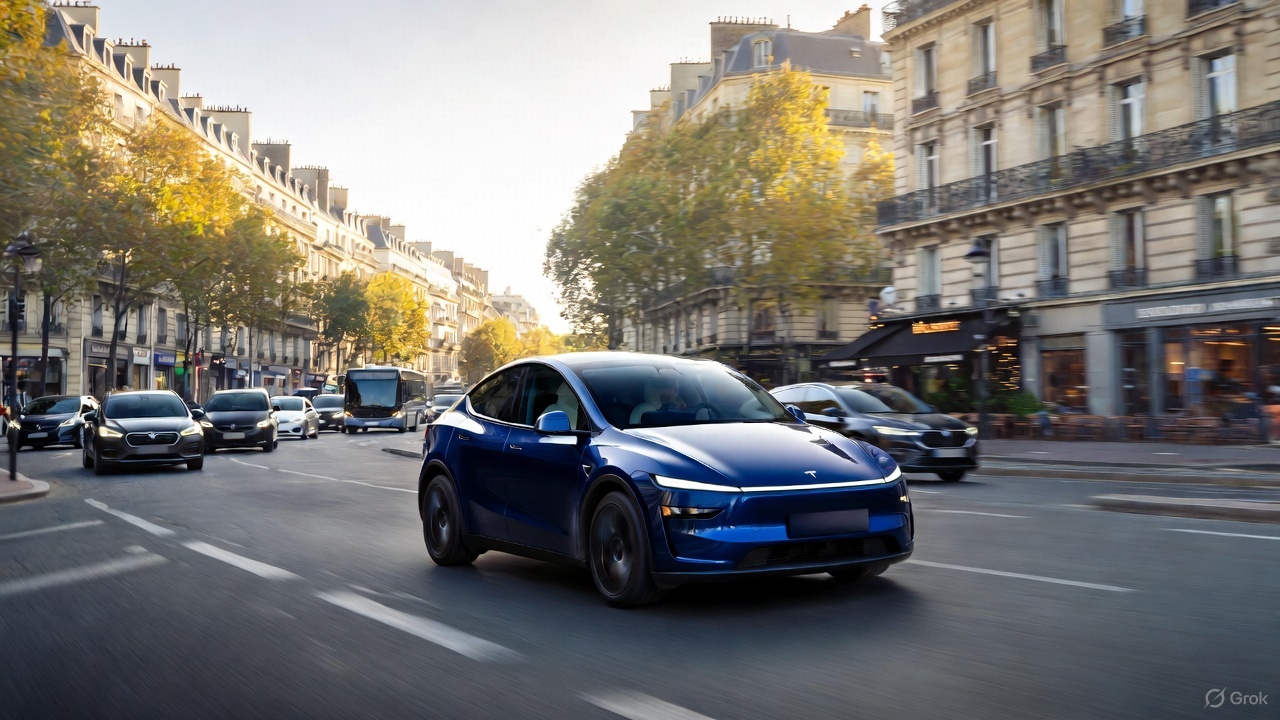
Tesla’s upcoming FSD Supervised system, set for a European debut pending regulatory approval, is showing notably refined behavior in real-world testing, including construction zones, pedestrian detection, and lane changes, as per a recent demonstration ride in Berlin.
While the system still required driver oversight, its smooth braking, steering, and decision-making illustrated how far Tesla’s driver-assistance technology has advanced ahead of a potential 2026 rollout.
FSD’s maturity in dense city driving
During the Berlin test ride with Auto Bild, Germany’s largest automotive publication, a Tesla Model 3 running FSD handled complex traffic with minimal intervention, autonomously managing braking, acceleration, steering, and overtaking up to 140 km/h. It recognized construction zones, braked early for pedestrians, and yielded politely on narrow streets.
Only one manual override was required when the system misread a converted one-way route, an example, Tesla stated, of the continuous learning baked into its vision-based architecture.
Robin Hornig of Auto Bild summed up his experience with FSD Supervised with a glowing review of the system. As per the reporter, FSD Supervised already exceeds humans with its all-around vision. “Tesla FSD Supervised sees more than I do. It doesn’t get distracted and never gets tired. I like to think I’m a good driver, but I can’t match this system’s all-around vision. It’s at its best when both work together: my experience and the Tesla’s constant attention,” the journalist wrote.
Tesla FSD in Europe
FSD Supervised is still a driver-assistance system rather than autonomous driving. Still, Auto Bild noted that Tesla’s 360-degree camera suite, constant monitoring, and high computing power mark a sizable leap from earlier iterations. Already active in the U.S., China, and several other regions, the system is currently navigating Europe’s approval pipeline. Tesla has applied for an exemption in the Netherlands, aiming to launch the feature through a free software update as early as February 2026.
What Tesla demonstrated in Berlin mirrors capabilities already common in China and the U.S., where rival automakers have rolled out hands-free or city-navigation systems. Europe, however, remains behind due to a stricter certification environment, though Tesla is currently hard at work pushing for FSD Supervised’s approval in several countries in the region.
